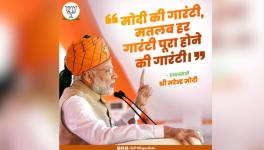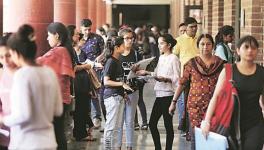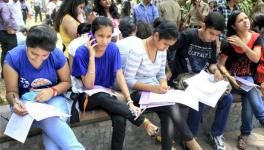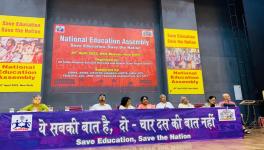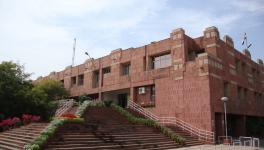West Losing Dominance in Critical Technologies
Representational use only.
Seven years back, I met Prof Thomas Kailath in Delhi, where he talked about how in the 90s, India was on par with, if not leading, countries like China in science and technology but was falling rapidly behind China after that. He talked about 100 institutes China had built on par with, if not ahead, in terms of infrastructure and laboratories. Kailath, originally from Kerala and settled in the United States, is one of the foremost names in communications, controls and signal processing. I remembered his words while reading recent startling headlines that China has become the world leader in 37 of 44 critical technologies evaluated by the Australian Strategic Policy Institute (ASPI), which has close ties to the military in Australia. The United States, the undisputed leader a decade ago in almost all these technologies, leads in only seven, though it is second to China in all other critical technologies. India and the United Kingdom lead in the rest, with Germany, South Korea, Italy, Australia and Japan following.
We in India can take some consolation that we might be losing out to China in a big way but are on par, if not leading, the erstwhile colonial powers. But in the United States, the ASPI Technology Tracker has set alarm bells ringing. Until now, the United States felt comfortable in the belief that China may be emerging as a peer competitor in the global economy, but since it and its European allies control technology, they could strangle China in a tech war. This sense of control is the genesis of the chip war against China, which the United States believed could be expanded to other areas. If this Technology Tracker is to be believed, that horse has truly bolted from the stable!
How seriously should we take the ASPI tracker? Can we really measure science and technology outputs? A simple quantitative analysis of research outputs is of no great value as both the quality of the journals and the papers can vary vastly. The ASPI tracker has used a variety of measures to weigh the quality of papers and their authors to build its index of global leaders in terms of institutions and researchers, not simply high-impact papers. The proof, according to ASPI, is that such a tracker would have shown that China was the world leader in hypersonics much earlier. ASPI writes in its report, “...according to our data analysis, over the past five years, China generated 48.49% of the world’s high-impact research papers into advanced aircraft engines, including hypersonics, and it hosts seven of the world’s top 10 research institutions in this topic area.” In other words, the United States should not have been surprised by China’s hypersonic missile test in 2021.
Any science and technology tracker can be criticised on methodological grounds. Are these indicators the only ones to be considered? How biased are the indicators to the outcomes that the researchers may want? Is the choice of language or languages biasing the results towards a more anglophone view of the world? These questions are and should be asked of any such study. But it is difficult to fault the broad outcomes—meaning, the results across the board on a range of topics do show trends that are difficult to contest. There is just too much evidence that the United States and the West are losing ground to China and even India. The world is becoming multipolar, not just in the economy but also in knowledge generation.
There are two other interesting results in the technology tracker. One is that Iran also shows up in the top five countries in specific areas of technology, though not in the same league as India, European Union countries and Japan. But its presence, despite 50 years of economic and technology sanctions, shows that the world of knowledge is porous. Iran has a history of developing and sharing knowledge. Neither the fundamentalists at home nor the United States sanctions could keep the Iranian people from becoming participants in the global knowledge economy.
The second important data is that a large part of the high-impact papers and their authors have not arisen from studies abroad. Let us take the example of China. Though the ASPI tracker makes much of the fact that 20% of the high-impact papers and scientists studied in the West—the United States, European Union or the United Kingdom—the converse is striking. Fully 80% of the high-impact papers and scientists did not arise from studies abroad but in China. With such a core of scientists and technologists, it is not surprising some of the most high-impact institutions are in China. And the impact in the United States of the prosecution of Chinese faculty and researchers—the shadow of the China Initiative—will only accelerate this trend. Though the United States is winding down the Trump-era China Initiative, different forms of targeting science and technology researchers of Chinese origin continue.
Western media has not reported on India, but the same trend of science and tech researchers arising from Indian institutions is visible in the Tracker results. A very nice chart shows the source and destination, including the return of researchers. A significant part of the research in India is done by those who did not go abroad for higher education. Today, leading Indian institutions are able to produce researchers who carry out high-impact research. This trend is indeed a welcome validation of India’s post-independence self-reliance model and the decision to create science and technology infrastructure in the country.
Another interesting part of the ASPI Report is not simply that it identifies the position of countries in what can be considered a race akin to the Olympic Games in science and technology but on the concept behind China’s rise as a global power. It is the vision of China’s self-reliance: from universities and institutions to the industry with State support. It is the same holistic vision of self-reliance—not only buying technology and investing in the industry but also setting up the institutions that can support and develop such technology. China, like India earlier, talked of self-reliance and the “made in China” development model. It is not only money as capital that develops a nation but knowledge as capital that is the foundation of a self-reliant, modern industry.
In the Modi era’s Make in India—foreign capital will invest in India and make India great again—what is forgotten is that knowledge is critical. Capital is not just money but knowledge as the congealed labour of the scientific workers, the scientists. That is why Marx talks about the labour of scientists (and technologists) as the closest to universal labour. And to advance, a country needs to invest in building science and technology institutions.
That is why what India’s University Grants Commission is doing under Mamidala Jagadesh Kumar is so appalling and threatens to destroy higher education. After mounting an all-out attack on the teachers and students of Jawaharlal Nehru University, he is threatening to repeat that on the entire higher education system. If his writ runs, it will convert India’s institutions essentially into feeders for institutions abroad and destroy India as a centre of advanced learning. This, coupled with inviting foreign universities to set up shop here, is an invitation to foreign institutions to streamline picking bright students from India, export them to the “mother” countries, and make money from others by “selling” their degrees. Does anybody seriously believe the United States and others will invest the very large sums required to set up laboratories and the research infrastructure any advanced institution in India needs?
Finally, what explains India wooing Australian universities to set up centres? Is it because we have no money? Are we not then an emerging power on par with China? Or is it simply the belief that the white man will help uplift Indian education simply by their presence and signboards?
Get the latest reports & analysis with people's perspective on Protests, movements & deep analytical videos, discussions of the current affairs in your Telegram app. Subscribe to NewsClick's Telegram channel & get Real-Time updates on stories, as they get published on our website.









